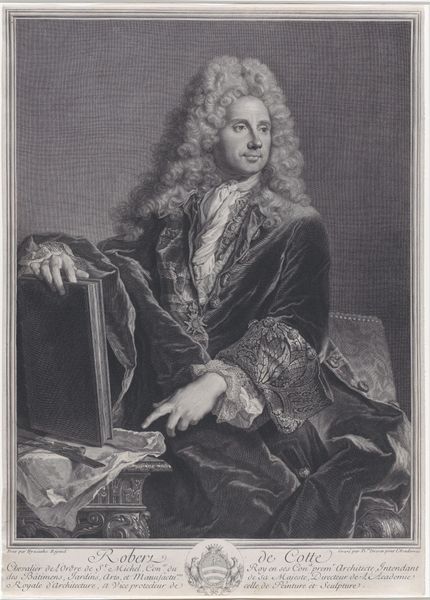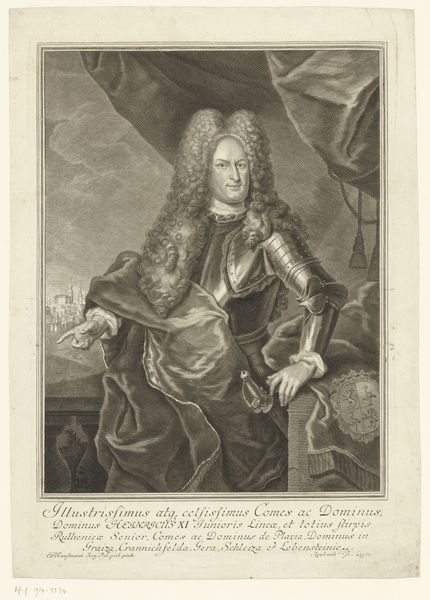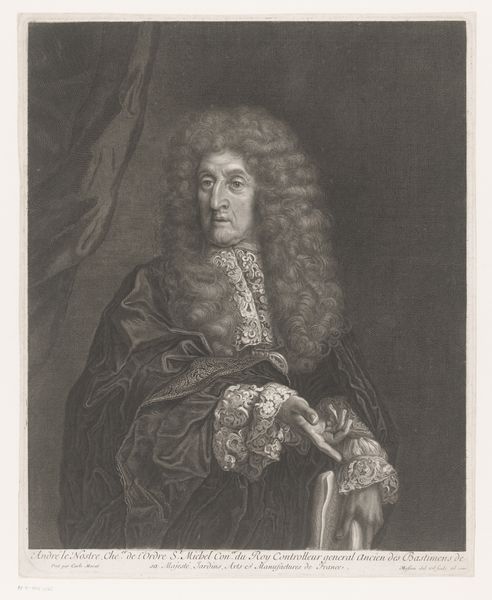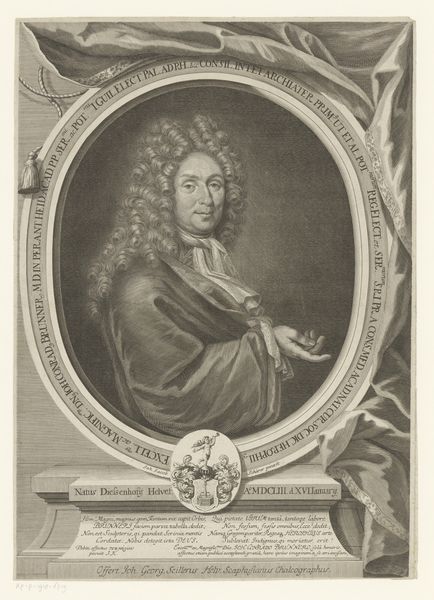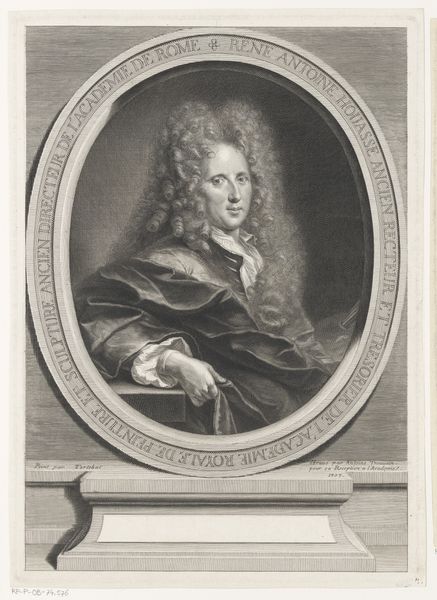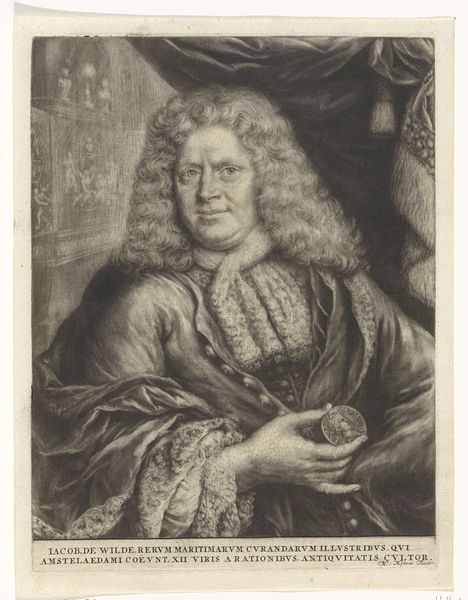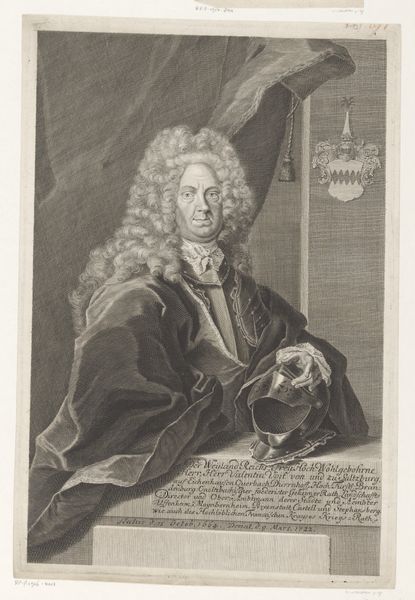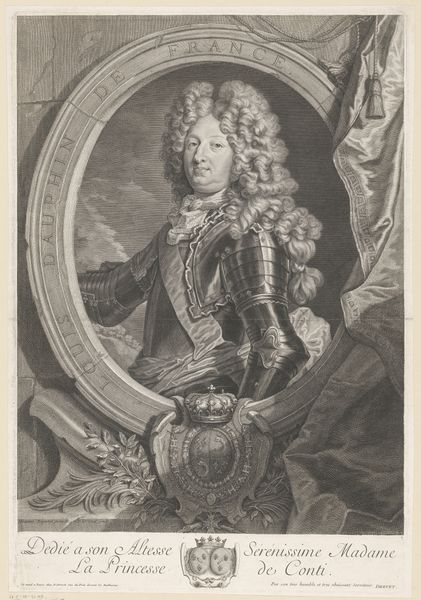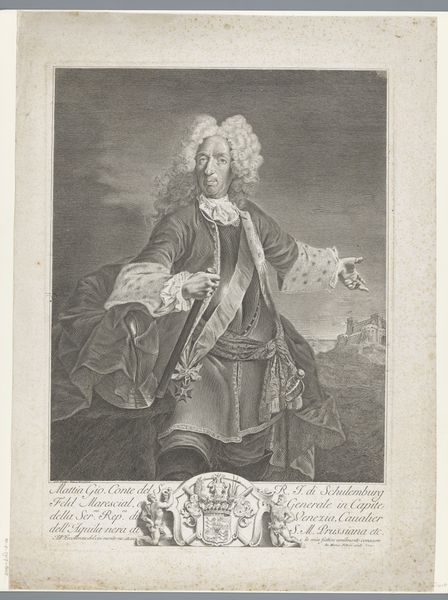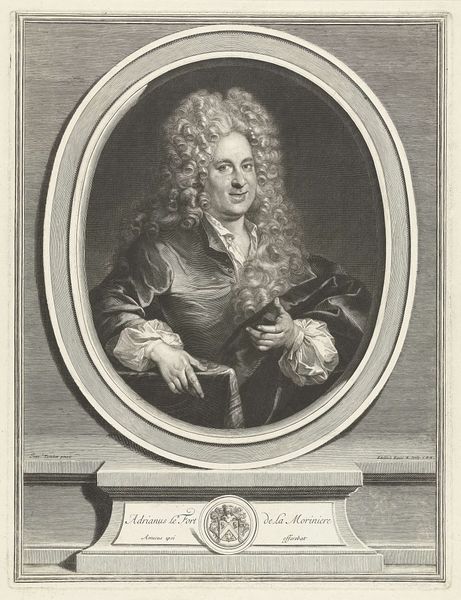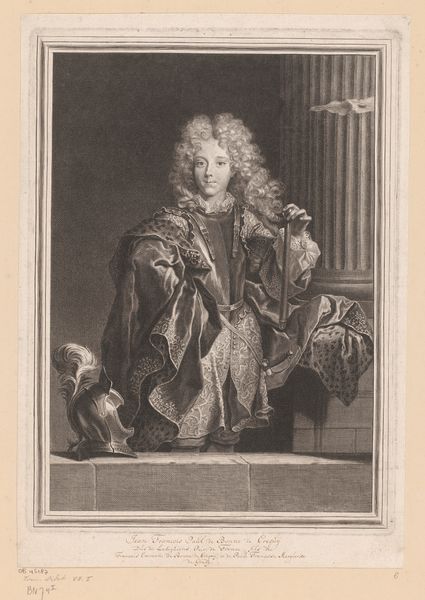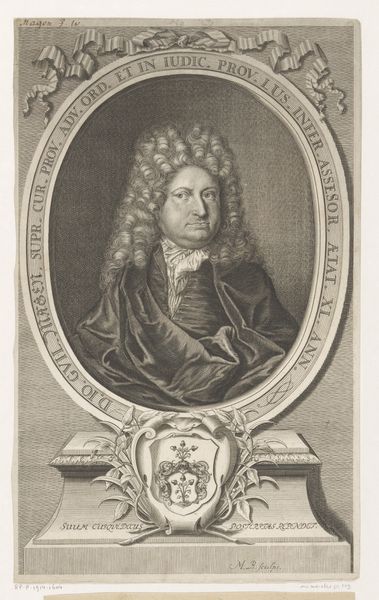
engraving
#
portrait
#
baroque
#
caricature
#
historical photography
#
portrait drawing
#
history-painting
#
engraving
Dimensions: height 345 mm, width 230 mm
Copyright: Rijks Museum: Open Domain
Editor: Here we have Antonio Pazzi’s "Portrait of Cardinal Neri Maria Corsini," dating from 1716 to 1786. It’s an engraving housed in the Rijksmuseum. I’m struck by how the swirling lines of the wig and robe contrast with the relatively still, almost blank expression of the Cardinal. What do you see when you look at this piece? Curator: Immediately, my eye is drawn to the composition. The artist employed the technique of contrasting textures. Notice the elaborate detail in the lace cuffs versus the relatively smooth, dark coat. Consider, also, how Pazzi balances the subject within the frame using implied lines. Do you see how the subject’s gaze, though directed away, interacts with the open space on the right? Editor: I do! It almost creates a sense of implied movement, as if he's looking toward something just out of view. So, the textures and spatial arrangements contribute to a deeper understanding? Curator: Precisely. It isn't just about rendering a likeness; it’s about activating the picture plane. And what about the interplay of light and shadow, how does that impact your reading of the form itself? Consider where the brightest white is placed and where the darkest shades lie. Editor: It definitely adds dimension and draws attention to certain features like his face and hands. This focus highlights the overall contrast. It’s much more intricate than I initially thought. Curator: Exactly. By dissecting these elements—texture, composition, light, shadow—we gain a much fuller understanding of the artwork’s construction and the artistic decisions made by Pazzi. Editor: I’ve certainly learned to appreciate the formal elements at play here, above all else. Curator: And that's the key: seeing the forest for the trees, and vice-versa.
Comments
No comments
Be the first to comment and join the conversation on the ultimate creative platform.
